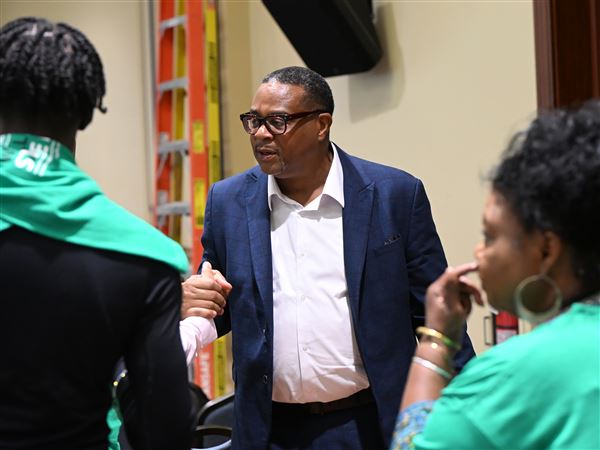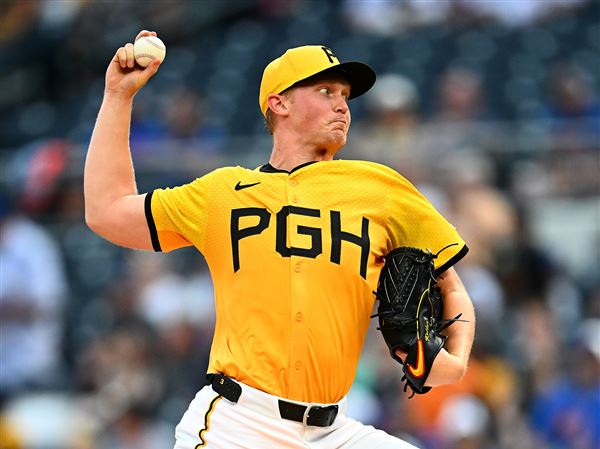BRADENTON, Fla. -- On Saturday and Sunday, from behind protective L-screens in front of the mound, Pirates pitchers threw live batting practice sessions. The exercise re-acquainted them with throwing while someone stands in the batter's box. And it helped the batters, who are used to hitting moderate-speed batting practice pitches from coaches or machines, time full-speed offerings.
As the sessions progressed, the pitchers employed slide-steps. They practiced pitch-outs. They changed the length of time they waited between coming set and beginning their delivery.
Those drills are not uncommon, but they carry a heightened importance this spring as Pirates pitchers try to improve their ability to control the running game. Teams ran with abandon against the Pirates last season, and manager Clint Hurdle wants the staff to divert more energy to limiting that this season.
"It's no secret that as a staff we did a [poor] job," Jeff Karstens said. "It can't be all blamed on the catcher. A lot of that was the pitcher."
The Pirates allowed 154 stolen bases in 2012, the most in the major leagues. Their catchers caught 11 percent of runners stealing, the lowest rate in the majors. Rod Barajas caught 6 percent of potential base-stealers, Michael McKenry 18 percent.
Those numbers, while subpar, do not account for the pitcher's involvement. Speedy players such as Michael Bourn and Mike Trout are going to steal bases no matter a catcher's arm strength or release time. The pitchers need to keep the runner off balance and out of rhythm, thereby delaying his jump and shortening his lead.
"If you give the catcher an opportunity to throw, a big league catcher should throw you out at second base," Karstens said. "The way they were stealing bases, it wasn't even close at times. I can't even say you put it on the catcher. The pitcher's got to be the one holding to give them a chance."
Earlier this winter, general manager Neal Huntington said the Pirates focused on the quality of the pitch first and controlling the running game second, and the ratio got out of whack.
"The majority of the stolen bases we've allowed are on our pitcher," Huntington said. "It's not just release time. It's tempo, it's looks, it's variance, it's holding the ball at times, and then yes, it is release time at the same time. That's where we've got to get better as an organization. It wasn't just the major league level."
Karstens referenced Andrew McCutchen's pregame preparation as evidence of what the pitchers face. McCutchen watches opposing pitchers for tendencies that might indicate what the pitcher will do before he does it.
"Just following no patterns [can help pitchers]," Karstens said. "There's video for everything."
If pitchers hold the ball the same amount of time on every pitch, runners can time them like a drag racer anticipating the green light. Varying the hold keeps runners off balance and can delay their first step by a split second.
"You can't hold the ball for the same amount of time every time you pitch," reliever Jared Hughes said. "Make sure you've got a quick-step delivery, a slide-step delivery, where you're a little bit quicker to home plate to make sure the runner doesn't get quite as good of a jump."
In a slide-step, the pitcher shortens or eliminates his leg kick and instead strides directly toward home plate to shorten the amount of time his delivery takes. Jason Grilli's slide-step is quick enough that it can throw off opposing batters as well.
The pitchers understand what they need to do, but the application of those tasks needs to stay consistent, Hurdle said.
"They've really got to sell out to it," Hurdle said. "At times, more did. Some did. And then depending on the season, when you get into individual games, the focus, the awareness, has a tendency to rise and fall. It's something we've got to be mindful of every time we get out there."
Hughes said he planned to focus on quickening his delivery this spring. At 6 feet 7, Hughes does not have a quick pick-off move to first, so he relies on other means.
"Every now and then, if a guy is trying to time me and I hold the ball for just a second or two longer, he's going to take off, and then that [pick-off] move will work," Hughes said. "It's not necessarily the quickness as much as it is a hold."
First Published: February 18, 2013, 10:00 a.m.

















